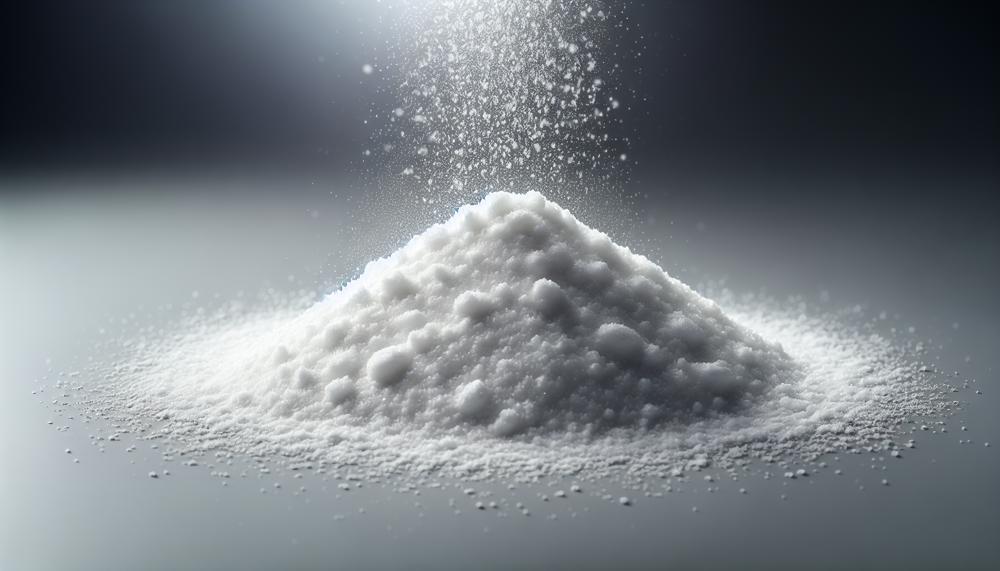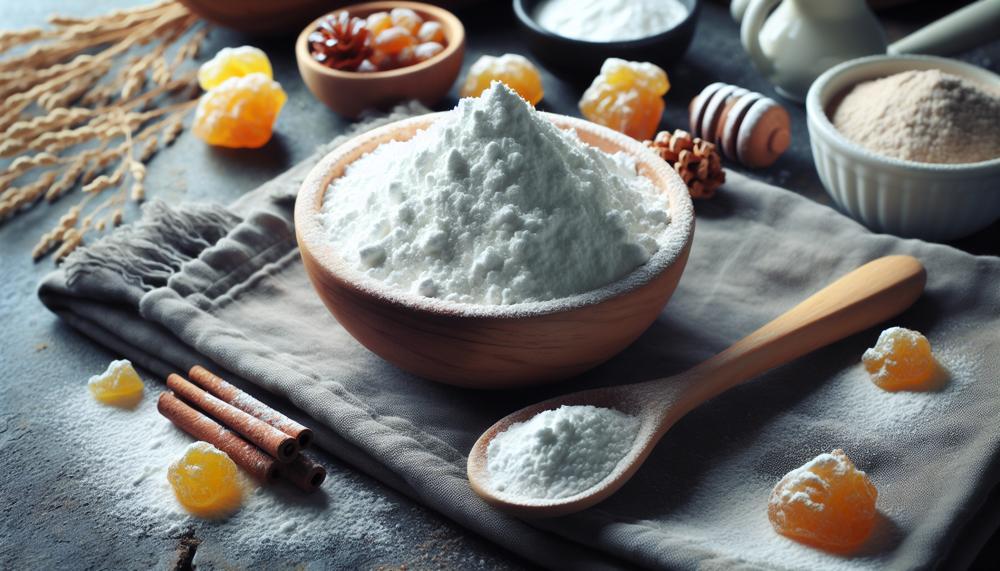Are you a passionate baker, constantly experimenting with new recipes and creating mouthwatering treats? If so, it’s likely that you have a trusty bag of powdered sugar tucked away in your pantry. But as with any food item, the question arises: does powdered sugar expire?
The process of making powdered sugar, also referred to as confectioner’s sugar, involves finely grinding granulated sugar and combining it with cornstarch. This versatile ingredient is commonly used in frostings, glazes, and other sweet delicacies. And while it has a long shelf life, it does have an expiration date.
The main concern with powdered sugar is its tendency to clump or harden over time. This can happen due to exposure to moisture or fluctuations in temperature. But fear not. Clumped or hardened powdered sugar can still be used after sifting out the lumps.
However, there are cases where powdered sugar can develop an off odor or flavor when it goes bad.
So, how do you know if your powdered sugar has gone bad? Stay tuned for our tips, where we will delve into the signs of spoilage and share tips on proper storage methods for keeping your powdered sugar fresh.
Don’t let spoiled powdered sugar ruin your next baking adventure – learn how to keep it at its best.
Contents
Does Powdered Sugar Go Bad?
The answer is yes, but you should always check for any signs of spoilage before using it. Here are some tips on how to properly store and check for spoilage in powdered sugar.
Proper Storage:
| Storage Method | Shelf Life |
| Unopened container in a cool, dry place | Indefinite |
| Opened container in an airtight container at room temperature | 1-2 months |
| Opened container in the refrigerator | 6-12 months |
| Frozen in an airtight container | Indefinite |
To ensure that your powdered sugar stays fresh, it’s best to store it in a cool, dry place away from any moisture or strong odors.
Unopened containers can last indefinitely, while opened containers should be used within 1-2 months or stored in an airtight container to prevent pests and maintain freshness.
Signs of Spoilage:
When checking if your powdered sugar has spoiled, look out for these indicators:
- Clumping: If the powdered sugar has clumped together, it may have been exposed to moisture, which can lead to bacterial growth. Avoid consuming it.
- Change in color or smell: If the powdered sugar looks or smells different than usual, it may be spoiled and should not be used.
- Pests: If you see any pests or signs of pest infestation, such as webs or droppings, do not consume the powdered sugar.
So, powdered sugar has a long shelf life and can still be eaten past its expiration date.
It’s important to properly store it and check for signs of spoilage before using it in any dish.
How Long Does Powdered Sugar Lasts?
Powdered sugar, also known as confectioners’ sugar or icing sugar, has a lengthy shelf life when stored correctly. However, it can still spoil if exposed to moisture, strong odors, or pests. The shelf life of powdered sugar depends on its storage and age.
Most manufacturers label it with a best-by date of one to two years after packaging.
This date does not necessarily mean that the powdered sugar has gone bad; rather, it may start to lose its freshness and taste slightly stale.

Shelf Life of Powdered Sugar:
- Properly stored powdered sugar can last indefinitely but may start to lose freshness and quality over time.
- Most manufacturers label it with a best-by date of one to two years after packaging.
- If stored in an airtight container in a cool and dry location, powdered sugar can last for several years.
Powdered sugar has an infinite shelf life when stored properly. It is crucial to regularly check for signs of spoilage and store it in an airtight container in a cool and dry location.
How to Store Powdered Sugar?

Storing powdered sugar may seem like a simple task, but it requires proper attention to ensure its freshness and safety for consumption. Here are some of the best storage methods you can use to keep your powdered sugar in its best condition.
- Keep it cool and dry: It’s important to store powdered sugar in a cool and dry place, ideally below 80°F (26°C). This will prevent heat from causing the sugar to clump or melt, while moisture can lead to hardening and spoilage.
- Use airtight containers: Powdered sugar should be kept in airtight containers to protect it from moisture and pests. Opt for food-grade containers that seal tightly to maintain their freshness.
- Divide into smaller portions: If you have a large quantity of powdered sugar, it’s best to divide it into smaller portions for easier storage. This will also prevent the entire batch from spoiling if one portion goes bad.
- Protect from pests and odors: To keep your powdered sugar safe from pests and strong odors, store it in a clean and pest-proof environment. Pests like ants and mice are attracted to the sweetness of sugar and can easily contaminate it.
- Label with expiration dates: To keep track of the shelf life of your powdered sugar, make sure to label containers with expiration dates. This way, you’ll know when it’s time to use or discard the sugar.
- Maintain a dry storage environment: Controlling the temperature and humidity of your storage area is crucial to preventing the clumping and spoilage of powdered sugar. You can also use moisture-absorbing agents like silica gel packets or rice in your container to absorb any excess moisture.
Proper storage of powdered sugar is essential to maintaining its freshness and safety for consumption.
How to Tell if Powdered Sugar has Gone Bad?
There are various ways to determine if powdered sugar has gone bad and is no longer suitable for consumption. These include:
| Indications of Spoilage | Description |
| Clumping | If you notice that your powdered sugar has formed large clumps or hardened into solid chunks, it is most likely past its prime. |
| Change in Color or Smell | If the powdered sugar has taken on a yellow or brown hue, or if it has a strange odor or taste, it is best to dispose of it. |
| Mold Growth | If you see any signs of mold on the powdered sugar, do not consume it. This can also occur if moisture has seeped into the container. |
| Pests | If you find any pests such as insects or rodents, in your powdered sugar container, it is no longer safe to eat. |
Aside from these visual cues, there are other factors to consider when determining if powdered sugar has gone bad. These include:
- Packaging: If the packaging has been damaged, torn, or opened, it is best to discard the powdered sugar, even if it appears fine.
- Shelf Life: While powdered sugar has an indefinite shelf life when stored correctly, it is important to check the “best-by” date on the packaging. This date is more about quality than safety, but if the powdered sugar is past this date and shows signs of spoilage, it should be thrown out.
- Storage: Proper storage is crucial for maintaining the freshness and safety of powdered sugar. Unopened containers should be stored in a cool, dry place away from moisture and odors. Once opened, it is best to use the powdered sugar within a couple of months or transfer it to an airtight container for longer storage.
It is essential to check for indications of spoilage and consider packaging, shelf life, and storage when determining if powdered sugar has gone bad.
When in doubt, it is always best to err on the side of caution and dispose of any powdered sugar that appears questionable.
Can You Freeze Powdered Sugar?
Yes, it can be. However, it is not necessary, as powdered sugar can last indefinitely when stored properly in a cool and dry place. Freezing powdered sugar may also lead to the formation of lumps when defrosting, so it is recommended to store it in a well-sealed container in a cool and dry place.
If you do decide to freeze powdered sugar, it’s important to ensure proper storage to maintain its quality. Here are some tips for freezing powdered sugar:
- Store the powdered sugar in an airtight container or freezer bag to prevent moisture from getting in.
- Label the container with the date of freezing to track freshness.
- Keep the powdered sugar in the freezer for up to 6 months.
- Before opening the container or bag, let the powdered sugar defrost at room temperature.
- To remove any lumps that may have formed during freezing, use a sifter or whisk.
It’s worth noting that freezing may alter the texture of powdered sugar and may not be suitable for all recipes. For optimal results, it is recommended to use freshly purchased powdered sugar.
Below is a table summarizing the storage periods for different types of powdered sugar:
| Type of Powdered Sugar | Fridge Storage Period | Freezer Storage Period |
| Regular powdered sugar | Indefinitely | Up to 6 months |
| Confectioners’ sugar | Indefinitely | Up to 6 months |
| Icing sugar | Indefinitely | Up to 6 months |
So, while it is possible to freeze powdered sugar, it is not necessary and may affect its texture. To maintain optimal freshness, store powdered sugar in a cool and dry place in a well-sealed container.
Conclusion
In conclusion, it’s important to remember that powdered sugar does have an expiration date and can go bad if not stored properly.
Despite its long shelf life, exposure to moisture or contaminants can lead to spoilage. This can manifest in the form of clumping, changes in color or smell, and even the presence of unwanted pests.
By regularly checking for signs of spoilage and understanding its shelf life, you can avoid any unpleasant flavors or odors when using this ingredient in your baking endeavors.




